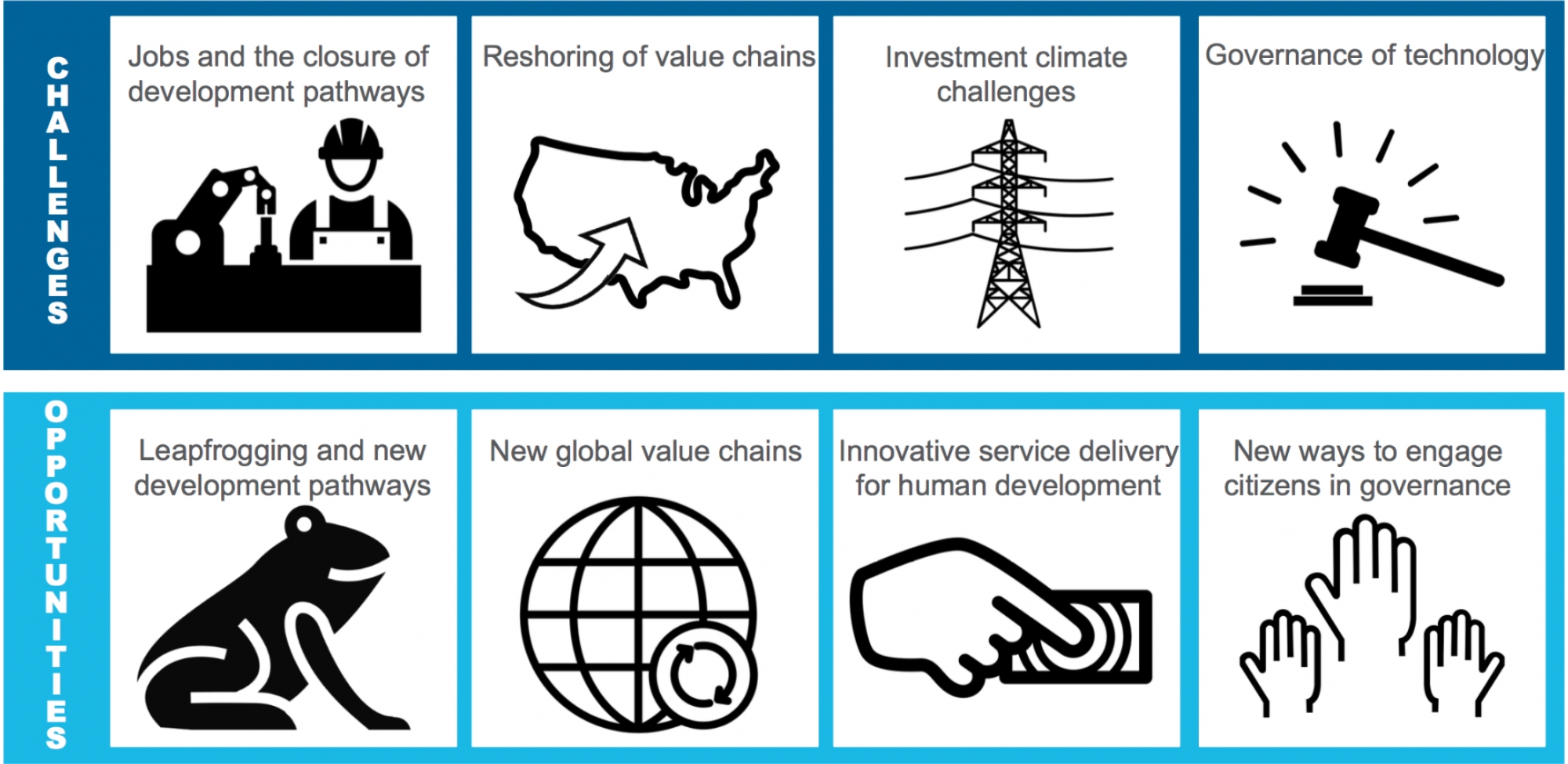Finding paths that lead to prosperity for all
In January this year we launched the Pathways for Prosperity commission in Nairobi. Up on the stage, alongside the commission co-chairs, we were struck by the enthusiasm in the room of journalists, policymakers, and entrepreneurs. What a crowd! We could feel people’s excitement at the prospect of artificial intelligence, medical breakthroughs, and the digital revolution.
As the commission’s academic directors, our thoughts are squarely on how we can turn this tidal wave of technological disruption into a positive force for inclusive development. This means being opportunistic, and taking advantage of new technologies if they are helpful. But it also means being wary of the challenges they throw up, and judiciously navigating the best course.
This blog will be a place for the commission to share our work as we go through this process. In this post, we want to briefly lay out some of the areas we are most interested in exploring as we set out.

Some emerging technologies, such as automation, robotics, and AI, may change how production takes place. This could make a large number of jobs obsolete, including relatively low-skilled jobs that are prevalent in developing countries, with important implications for income distribution and the closure of classic development pathways.
Of course, these upheavals provide opportunities as well. New technologies allow countries to leapfrog in the way economic activities are structured. Digital services are a clear example: no need to have banks with many branches or staff in order to offer quality digital financial services. Costs for supply chain management or energy generation can also be dramatically reduced with next generation technology and infrastructure.
At the same time, technological progress will also change where production takes place, as it means that production is increasingly less dependent on the location of labour. Therefore, one driving force of globalisation – low labour costs in certain countries – becomes less relevant, and manufacturing can be ‘re-shored’ in richer (expensive) economies.
This potential shifting of global value chains in manufacturing may be offset by new business opportunities in digital services. Improvements in communications and other technologies offer alternatives to face-to-face interactions, not just in consumer or business relations but also in areas such as healthcare and education. It will open development pathways through trade in a broader range of goods and especially services, beyond traditional trade in commodities or manufacturing.
Of course, to benefit from technology, a country needs to attract technological investment with the appropriate infrastructure, human capital and institutional governance. Many developing countries struggle to provide this positive investment climate at present. The required conditions for technology frontier firms may even be more stringent, meaning many developing countries risk missing out on such investments. And attracting investment isn’t a government’s only role – not by a long shot.
Governments need to fairly regulate the many sectors of the economy, but regulatory frameworks designed during the second industrial revolution are straining under the weight of change. Technological progress brings fear: for example (beyond job destruction), digitisation and machine learning may leave people less protected against exploitation or encourage vast concentration of business interests. Communication such as social media may disrupt the ways in which governments work. Installing well-balanced regulations is a key challenge for governments around the world; regulatory stasis or knee-jerk reactions are equally unhelpful.
Governments are not just stewards, but also users of technology. This is one of the most exciting areas where emerging technologies could revolutionise the way governments function. With new and better technologies, government services could reach all, including the poorest, more effectively, with lower costs and less leakage and corruption. For example, communication technologies, blockchain, digitisation, and machine learning are all offering opportunities, thusfar underexploited.
The final opportunity to mention is related to government services, but perhaps more fundamental. Improved communication technologies, digitisation and data management also offer innovative ways for governments to reset relationships with their citizens. Through new forms of civic participation and open democracy, governments could reimagine the public square.
We are on the cusp of a new generation of technologies, but the challenges and opportunities are the classic topics of governments. How do we ensure countries have sustainable industries? How can we achieve human development milestones for health and education? How do we harness emerging technologies for more effective government? Perhaps most importantly, the commission is interested in looking at how these technologies will affect inclusion of the poor and vulnerable. Watch this space.

